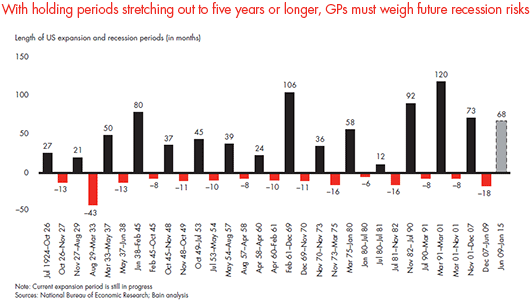Forbes.com
This article originally appeared on Forbes.com.
The continued expansion of financial assets looks to be an enduring feature of the investment environment, which private equity (PE) firms will need to reckon with for a long time to come. However, the very forces that rescued the boom-year investments—record low interest rates and plentiful capital—are magnifying two issues that are making it more challenging for general partners (GPs) to profit from investments they make today. First, asset prices are and will remain high as investors of all types wield record amounts of capital and are willing to bid up acquisition multiples to acquire assets. Plentiful low-cost debt merely adds upward pressure on prices and ensures they will stay high.
The second area where capital superabundance pinches is the longer holding periods that will be needed to prepare fully priced assets for exits that can command decent returns. Simple mathematics suggests that holding periods of five years or more look to be the new norm; it takes at least that long to achieve a twofold return on invested capital at IRRs trending toward the mid-teens, which we are currently seeing prospective acquirers use as their underwriting target.
Further complicating the superheated PE investment climate at a time of capital superabundance is the increased likelihood that the deals GPs undertake today will experience a turn in the business cycle during their hold period. Nearly six years have passed since the US economy hit the bottom of the last recession (see figure). Given an expected five-year holding period for a majority of assets, GPs contemplating an investment should consider that they may need to ride out a downturn that could persist for a year or more.

Instead of waiting for gains from market shifts referred to as “beta” to do their work for them, leading GPs are stacking the odds in their own favor. They are stepping up their due diligence to ensure they can identify the winning factors in a target company that can become the basis for a value-creation plan that can withstand any economic or market climate. As discussed in an earlier post, “Capital Superabundance Is Here To Stay In Private Equity,” Bain has identified a set of winning factors that correlate with deal success. Bain has found few deals that achieved unambiguous success in the absence of at least one winning factor—and the more of these factors there are, the more potential ways for a deal to win. Bain research has found that for companies acquired in transactions where the price paid exceeded 10 times earnings before interest, taxes, depreciation and amortization (EBITDA), the winners had an average of more than three winning factors.
The power of capital superabundance over the fate of PE firms’ success reinforces the importance of deal sourcing that surfaces true gems in a market that commands crown-jewel prices, due diligence that can quickly spot winning factors and warning beacons, and a repeatable value-creation plan that can transform assets into top performers over and over again.
Written by Hugh MacArthur, Graham Elton, Bill Halloran and Suvir Varma, leaders of Bain & Company’s Private Equity Group.